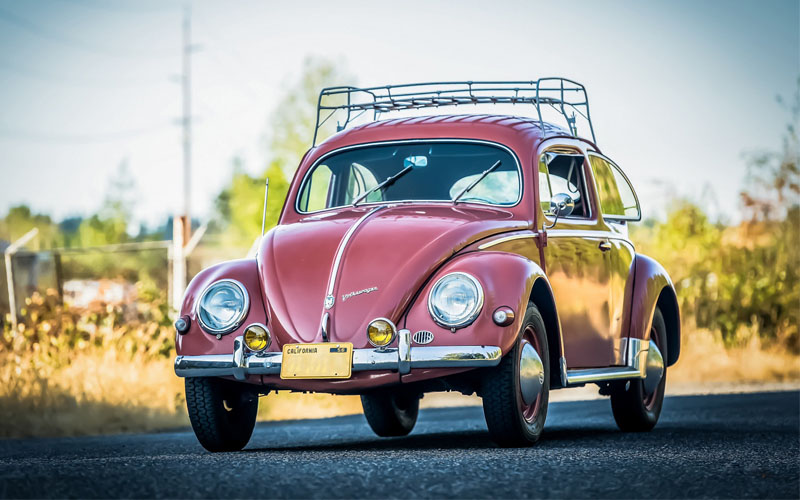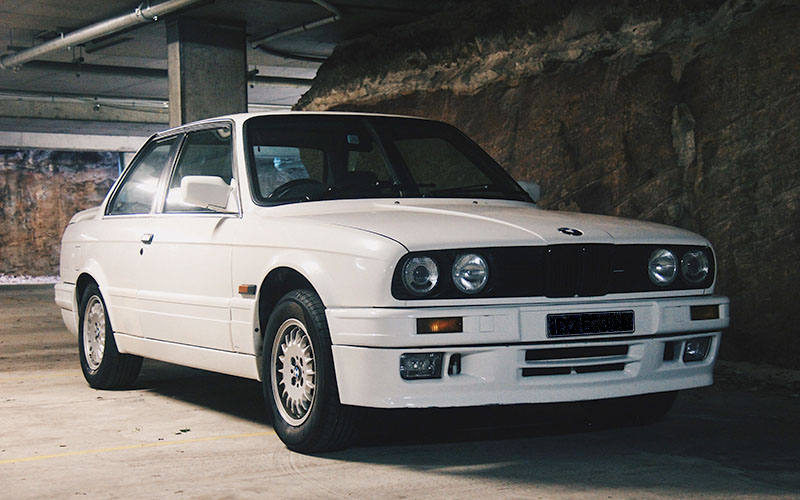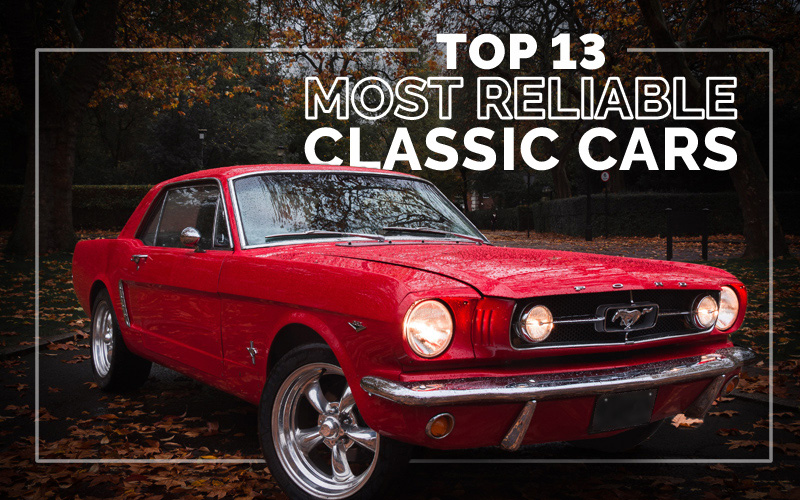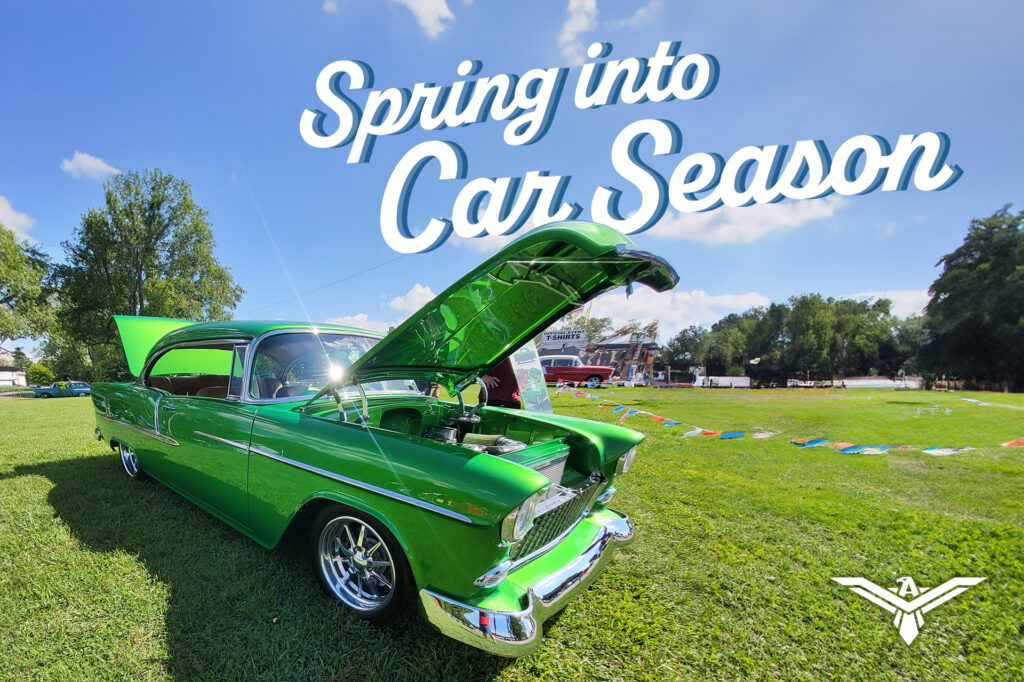Classic Cars You Won’t Be Afraid to Drive
Do you prefer a reliable classic car, or do you take pride in a mechanical challenge? It’s not something that every classic car collector or enthusiast will admit, but sometimes a bit of unreliability adds to the charm of a cherished automobile. There’s a reason some people use the phrase “appliance” to describe a car that doesn’t speak to their hearts; it can be hard to feel a connection with a vehicle that just shows up for work every day without complaint. There are also plenty of rallies, vintage races, and other events where a bit of (mostly) unexpected and mandatory wrenching is part of the appeal.
If the prospect of having a riding mechanic – or being one – doesn’t appeal to you, there are still a lot of reliable classic cars out there for you to purchase and enjoy. Some of us just want to be able to hop into our classics and know we stand a better-than-average chance of finishing the drive without incident. We’ve come up with 13 of the most reliable classic cars below. Don’t be surprised at a couple of the names on this list; a strong community of owners and aftermarket suppliers can do a lot to restore a tarnished reputation for reliability.
1991-1998 Toyota Land Cruiser
It won’t surprise you that the “Series 80” Land Cruiser is reliable; Toyota’s global off-road vehicle is perhaps the most durable and dependable classic vehicle for sale at any price. What might be a surprise is the blue-chip classic status now accorded to these big bruisers; Toyota’s first attempt at an “upscale” Cruiser has a fanatical collector community. Want to go old-school? Choose a 1991-1992 model, because it’s powered by the 3FE straight-six that traces its heritage to 1948, when Toyota took their favorite parts of two General Motors engines and combined them to create a legend. 1996 and 1997 models use OBD-II diagnostics, so you can solve many problems with a handheld scanner. Buying a Series 80 is like adopting a tortoise; it’s not going anywhere fast, but it’s also not going anywhere.
Volkswagen Beetle and Super Beetle

By modern standards, none of Volkwagen’s classic rear-engine, air-cooled cars are exactly reliable – but if you stay ahead of the maintenance, it will get you where you want to go. It’s a simple machine and a lot of the “hippies” who owned them learned to rebuild Beetles top to bottom thanks to the classic manual How to Keep Your Volkswagen Alive: A Manual of Step-by-Step Procedures for the Compleat Idiot. Read it like a novel, marvel at the original sketches that were such an improvement over the blurry black-and-white photos found in other repair manuals, then go out and get started with a Beetle of your very own.
When all is said and done, however, there are several great reasons to specifically choose a classic car specialist to insure your classic or collector automobile. You’ll be dealing with people who understand why your vehicle means so much to you. You’ll have a team of qualified specialists to make it right if the worst happens. And you’ll probably save a few bucks along the way. What are you waiting for?
1965-1993 Ford Mustang
The original Mustangs are some of the most thoroughly studied cars in history and every single part from the car can be found brand-new in the aftermarket, including the body shell. Let’s give some credit to its successors, however. The “Mustang II” suffered when it was new from underpowered engines and unpleasant emissions controls that decreased reliability, but those issues are yesterday’s news and many “compact Mustangs” are running computer-controlled crate engines good for 200,000 miles. The 1979-1993 “Fox Mustangs” are also now recognized as true classics and you can expect outstanding service from them. Don’t tell anybody, but the four-cylinder LX models from the early Nineties are fuel-efficient, dead reliable, and have all the style of their V-8 siblings, at a lower cost.
1984-2001 Jeep Cherokee
If the Mustang II deserves a better reputation than it has, the “XJ” Jeep Cherokee is perhaps in the opposite camp, particularly with regards to the early model years, which suffered from a variety of electrical and interior maladies. The bones of the thing are bulletproof, however, and there is almost unlimited help available from owners’ forums and the aftermarket. Two-door models are rare and prized nowadays, but if you can’t find one, don’t worry; the four-doors are actually a bit stiffer and better for hard use off-road.
1984-1991 BMW 3 Series

The “E30” BMW scandalized the owners when it came out; the previous 320i was a big leap from their cherished 2002 coupes, but this car was positively space-age! In hindsight, we can see that it wasn’t that complex of a vehicle, particularly with regards to suspension design. All the bugs have long been worked out, parts are plentiful, and if you plan to drive your E30 on the street you should have plenty of spare interior parts to choose from, thanks to this little Bimmer’s popularity in several different club-racing series.
1976-1985 Mercedes Sedans (W123)
Our German tour continues with the famed W123-chassis Mercedes sedans, coupes, and station wagons. As comfortable in Nairobi as it was on the Autobahn – more so, in the case of the diesels – these were some of the most over-engineered cars ever built, to the point where potential buyers will look at a car with 450,000 miles on the six-digit odometer and ask if it’s rolled over. Mercedes-Benz continues to supply some parts for the W123. Coupes will cost more, wagons more still. The vast majority of vehicles for sale at any given time are diesel, but true W123 cognoscenti will search out the 230E and 280E gasoline-powered sedans imported into the “grey market” by Bill Dovell and other specialists.
Porsche 911SC and Carrera 3.2
The air-cooled 911 had a positively saurian production run, lasting nearly thirty-five years – but not all of these cars are trouble-free. Enthusiasts looking for a low-drama experience should focus their attention on the 3.0-liter 911SC and 3.2-liter Carrera made from 1978 to 1989. Featuring under-stressed engines, rust-proofed bodies, and relatively simple electronics, these are the best bets for worry-free operation. Buy the best one you can afford, because parts are not cheap.
1994-1996 Chevrolet Impala SS
Talk about long production runs; the 1996 Impala SS shares a lot under the skin with the 1977 Impala, to say nothing of the 1973 Chevelle that donated some chassis dimensions and components. It’s also identical to the police and taxi Caprices in many ways. No surprise, then, that these are great reliable classic American cars that are easy and affordable to service. A replacement transmission can be had for under two thousand dollars; that’s what you’ll pay for some interior trim parts on a classic Porsche or BMW. Fuel injection means an easy start in all weather, and a Corvette LT1 engine means you’ll never be late for work.
1984-2013 Chevrolet Corvette

What’s better – well, faster, anyway – than a Corvette-engined Impala? Why, a Corvette-engined Corvette! Everybody knows that the C4, C5, and C6 generation Corvettes are racetrack superstars and back road delights, but they are also exceptionally reliable vehicles that often rack up over 100,000 trouble-free miles. The C6 Z06 has a few specific engine issues that in most cases have long since been rectified by the original owners, and the early C4 cars have a fussy digital dashboard that is gorgeous when it works but at this point in time might need repair. Otherwise these Vettes are basically taxicab-reliable, with a lot more style.
Saab Classic 900, 1978-1993
By the time the Saab 900 appeared, it was already a decade-old car; most parts came from the earlier and less crash-standards-compliant Saab 99. With some of the best seats ever fitted to a production automobile and frankly thrilling Turbo models, the 900 quickly captured the American imagination. In later years it was most often enjoyed as a convertible, but the true fans will search high and low for a Turbo 5-door hatchback. Unlike most front-wheel-drive cars, the engine is mounted along the centerline of the car rather than sideways, making service a bit easier. 300,000-mile odometer readings are common among the “Classic” 900s sold before 1994.
Volvo P1800
Famous for having reached 3.2 million miles in the hands of obsessive owner Irv Gordon, Volvo’s sleek coupe can do nearly as well in the hands of mere mortals who don’t pursue a jet-fighter service schedule. While P1800S models built in Gothenburg were more reliable when they were new, any surviving P1800 should by now have all the most reliable parts installed. The P1800ES wagon is highly sought after.
Datsun 280Z
The original Z-car, the 240Z, made a name for itself by having the beauty of a Jaguar with much better reliability. This philosophy found its highest expression in the slightly stouter 280Z of the late Seventies. Shorn of the original emissions control, these are highly durable vehicles with tremendous aftermarket support and plenty of performance upgrades available. Some of them are celebrating their sixth decade of SCCA competition. The 280ZX that succeeded the 280Z has all the same basic mechanical virtues but is wrapped in more complex interior electronics and fussier exterior styling; don’t write it off, particularly if you’re a fan of the looks.
1967-1976 Plymouth Valiant
This workaday cousin to the Dodge Dart carried the bulk of Plymouth’s sales volume through the Woodstock and disco eras. Powered by the faithful slant six and small-block Chrysler V-8, the Valiant charms in the present day with its simple styling, fantastic visibility from the drivers seat, and broad variety of aftermarket possibilities. Some of them got a bad rap thanks to early efforts at emissions control, but that’s no longer a concern in most states in a car of this age. You can build a Valiant as a straight-six time machine or a high-power sleeper. Either way, it should provide faithful service, with repairs being infrequent, easy, and affordable.



